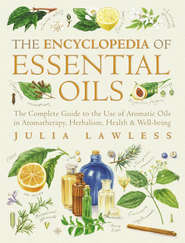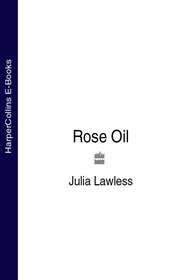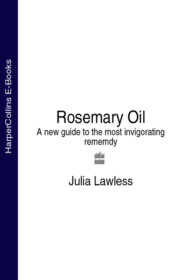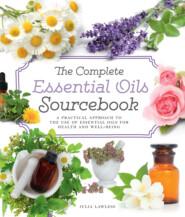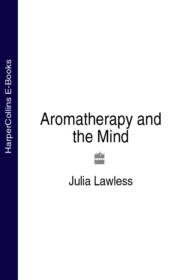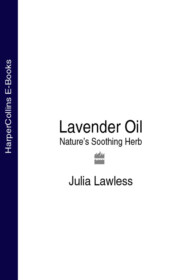По всем вопросам обращайтесь на: info@litportal.ru
(©) 2003-2024.
✖
Aloe Vera: Natural wonder cure
Настройки чтения
Размер шрифта
Высота строк
Поля
Aloe has appeared in all the most advanced Materia Medica of the great ancient civilizations: Egypt, Mesopotamia, Arabia, Greece, Rome as well as in China and India. These civilizations were trustees of knowledge concerning the healing powers of Aloe vera, a knowledge which they passed on to their successors living around the Mediterranean region and subsequently to the whole of the Western world. They in turn traded with Africa, where the majority of Aloes have originated: thus the story of Aloe goes full circle…
Africa is the source of many varieties of the Aloe plant, and so it is natural that it features strongly in the ethnographic lore of both the North and South. A number of tribal uses for the plant have been documented, and anthropologists report on the widespread use of Aloe among the tribes of southern Africa – the Zulus, the Sutos and the Xhosa being the best known. The Aloes used vary regionally and are not popularly known except for Aloe ferox; Aloe macracantha; Aloe tenuior Haw., Aloe marlothii A. Berg and Aloe variegata L., are among those that have been used traditionally.
The Sutos tribes use Aloe as a natural antiseptic. When colds or influenza become a threatening epidemic, a public bath infused with Aloe is taken by the villagers. The plant is used as protection against lightning, by sprinkling burnt, crushed and boiled bits of the plant around the village. Barren Suto women drink a concoction from Aloe juice to aid their fertility. Nor is its use limited to tribe-members alone. If their animals are wounded, ash from the burnt leaves of Aloe is placed on the ground beneath the injured limb to hasten healing.
The fresh juice from the Aloe leaf is used by the Sutos, Zulus and Xhosa to treat eye infections, applied directly to the eye. In the Transvaal, an Aloe variegata infusion in brandy is used to treat haemorrhoids.
The Zulu women in South Africa use Aloe to help wean their babies, by spreading the bitter gel on their breasts. A decoction of the Aloe arborescens leaf is given to Zulu women just before they give birth, to aid the birth process. (In the Transvaal, a vinous extract of Aloe sp. is used for abortive purposes). The Zulus also use the plant, steeped in water, as an enema to clean out the intestines. Even the flowers of the plant are not wasted. Ground up into powder, which is then steeped in water, it is used to treat feverish colds in children, either orally or as an enema. The flowers are also cooked by the Zulus and eaten. It is good for snuff: tobacco is mixed with the ash of the Aloe leaf. In addition, Aloe has traditionally been used in South Africa as a cure for venereal diseases.
In general, a number of southern African tribes use Aloe for stomach problems. They drink ‘a decoction of the roots’ which can cause vomiting if taken in large amounts.
The Xhosas and other tribes use Aloe to treat tape worm infection. It is considered effective with no side-effects. Both the gel and juice are used in the treatment of ringworm. It is also used as a purgative, a treatment for boils and sores. It is said that Xhosa children are fond of sucking the nectar-like juice out of the flowers, which is said to create weakness in the joints if taken over a long period. It also has a narcotic effect!
The southern African tribes use Aloe with their animals, in the treatment of scab with sheep and as a purgative. Aloe saponaria Haw., known as ‘White-spotted aloe’ or ‘Soap aloe’, is used in the treatment of ‘blood scours’ in calves and to treat indigestion and enteritis in fowls, both with excellent results. The Zulus believe that the smoke from burning leaves of Aloe protects cattle from the ill-effects of eating the wrong food.
In Africa and the East, the plant was even said to have been used to ward off evil spirits. Hung over the entrance to a house, it ensured a long life for its inhabitants. It could also be worn as an amulet around the neck to guarantee a happy and healthy life.
Richard Burton, the 19th-century explorer and naturalist, reported on his African travels that Aloe vera, suspended above one’s bed, was effective against mosquitoes. In Columbia the live plant is used in shops to repel flies and the juice is rubbed on children’s legs to protect them from insect bites. Recent research has shown Aloe vera to be an effective insect-repellent by virtue of its bitter taste and the unpleasant smell of the sap.
Aloes were depicted in rock paintings by the Bushmen in the early 18th century, according to Miss D F Bleek in her book, Rock Paintings in South Africa. These rock paintings were found near the Orange River in the Orange Free State, in a cave by a waterfall. Miss Bleek suggests that the Aloes depicted are Aloe ferox ‘Miller’ and Aloe broomii. Walter Battiss in his The Artists of the Rocks (1948) suggests that this ‘painting of Aloes is a most remarkable painting in the whole of the art. It belongs to the Last Period of Bushman Art.’
The Aloes are shown clasped in the Bushmen’s hands like triumphal candelabras, two figures facing each other. Another figure holds it in his hand pointed to the earth, while another Bushman lies prostrate below a floating aloe. Two other Bushmen are shown hunting with large dominant buck, possibly antelope, behind them. This suggests that Aloes were an integral part of life and nourishment in the Bush, as important as hunting for survival. The juice of Aloe saponaria is still used by hunters in the Congo, in Central Africa, who smear their body with it before the hunt. The bitter smell of the Aloe juice masks the hunter’s smell and blocks perspiration, thus making the hunter more invisible to his prey. Aloe saponaria is also used in Southern Africa for healing battle or hunting wounds.
In the 9th century AD, Al-Kindi of Baghdad wrote The Medical Formulary, also known as ‘the Aqrabadhin of Al-Kindi’. Al-Kindi was known as the ‘philosopher of Arabia’. In The Medical Formulary he makes several references to the use of Aloe, particularly in relation to eye treatments. In all remedies, Aloe is mixed with other ingredients – for example, gold, red hematite and saffron, or myrrh and saffron along with soapwort, sweet marjoram and lycium juice – then pulverized and kneaded and made into pills. When required, the pills are dissolved in woman’s milk and oil of violet before being used. His remedies nearly always end with ‘It is good and effective with God’s help.’
Al-Kindi records that the Arabs called Aloe vera sabir or sabr, while the Syrians called the plant sabhra or sebara. There is a valley in Lebanon known as the Sabhra Valley, which translates as the Valley of the Aloes. The two languages are similar and the meaning is the same in all cases – ‘bitter and shiny substance’. Aloe was, as ever, a well known purgative, but Al-Kindi also noted its anti-inflammatory action, its effective opthalmological uses (such as its effectiveness with eye ulcers) and its positive action as regarded melancholia. It was also helpful with dyspnoea or difficult breathing. As a purgative drug, Aloe was treated with caution. Aloe was also being used throughout the Middle East: in the lands around the Red Sea, Aloe latifolia was believed to cure both ringworm and impetigal infections.
A note of caution came from the mediaeval medical writer Mesue of Damascus, who gave a rather graphic report of side-effects which even included piles. One lurid story concerned Emperor Otto II, who took too much Aloe and died in AD 983.
It is generally held that it was Arab traders who first brought Aloe vera to Persia and India about the 6th century BC. According to Chopra’s ‘Indigenous Drugs of India’, Aloe was already widely used in India during Hippocrates’ lifetime (460–375 BC), and its medicinal uses dated ‘back to the 4th century BC’.
Early medical texts from India indicate its use for skin inflammations. A Portugese naturalist, Garcia da Orta, later described the Hindus using Aloe vera for ‘purgatives, in kidney disease, colic, and also for healing wounds’, including the treatment of eye sores.
Aloe vera still plays an important role in the traditional medicine of India, where Aloe vera preparations are particularly important for their cathartic (purgative or laxative), stomachic (digestive), emmenagogic (aiding in menstruation) and anthelmintic (expelling intestinal worms) properties. In addition, Aloe vera gel is considered one of the most important tonics for the female reproductive system, the liver, heart and spleen.
From India, the use of Aloe vera probably spread to Java, Malaysia, Sumatra and to the rest of the East Indies. In Java it was applied as skin care on infections, sunburn and blisters, while Aloe barbadensis was taken internally for gonorrheal infections. In addition it was used internally for tuberculosis in much the same way as it was in Europe: as a popular cure for consumption. In Malaya, Aloe vera pulp was bound onto the forehead to relieve headaches; in the Philippines it was used to reduce swelling (oedema) in beri-beri sufferers. As in Europe, when mixed with wine it was considered effective in preventing hair loss. In the East Indies there are reports that Aloe vera was popular for treating conditions such as gout, or aches and pains in the joints and bones.
The same conditions were traditionally treated with Aloe in the Caribbean. It was used for skin care and to treat problems such as cuts, blisters, wounds and insect bites. Its use in internal ailments appears to have been taught by the missionaries and explorers. In the Caribbean today it is still used for both human and animal ailments. Apparently the leaf is sucked as though it were sugar cane! Aloe vera juice, fed to horses, makes the horses’ blood so bitter that ticks apparently fall off after the first bite! It is also used for delousing, repelling infestations and as a life-giving tonic during cattle birth trauma.
From India and the East Indies, the use of Aloe spread into the Canton province in China. No doubt it was also brought to China by Arab traders. Chinese medical texts refer to Aloe from the 7th century AD onwards; the first noted use was for healing dermatitis. Aloe vera was especially noted for its use as a treatment for sinusitis and worm fever, as well as for convulsions in children and skin afflictions such as eczema.
The Venetian Marco Polo, travelling through China in the 13th century, found Aloe vera was used to treat rashes and other skin disorders, as well as for stomach ailments. Today, although Aloe chinensis is one of the best known regional variations of the healing Aloes, Aloe arborescens is used to treat burns in China and Russia. In addition, Aloe arborescens has been used in Japan as a folk remedy for burns, insect bites, wound-healing, athlete’s foot and digestive complaints. In his Il Milione, Polo documents Aloe’s history and legend, tracing its development and usage from the Island of Socotra through to the Orient, via the great Eastern trading routes.
Wound-healer
Aloe vera’s use as a wound-healer and for general skin treatment is perhaps its most universally acclaimed virtue among many diverse and distant ethnic groups. In northern Mexico and the Rio Grande Valley of South Texas, Aloe vera, known as savila, grows profusely and is used to heal skin diseases. In Mexico the leaves are gathered in the semi-wild to treat burns, bruises, skin irritations and even leprosy. In Florida, Aloe vera is widespread and has been used traditionally for treating jelly-fish stings as well as bee stings. Mayan women in the Yucatan region of Mexico have used Aloe vera for centuries to moisturize their skin. Like the Zulus in southern Africa, they also use it to wean their children from breast-feeding.
Throughout Central and South America, the pulp of Aloe vera is regarded as a mild laxative; another one of its earliest and most common uses worldwide. Indeed, the early Arabs’ principal use of the drug Aloes was as a laxative, although other uses were suggested in Persian records of the 6th century BC. They were using it both internally and externally, and processed the plant by separating the gel and sap from the rind using their bare feet. The resulting pulp was placed in goatskin bags and dried in the sun before the contents were ground into powder. Still today Aloe is called the ‘Desert Lily’ by the Bedouin tribes and the Tuareg of the Sahara Desert.
The Age of Discovery (#ulink_3f7f894b-de5e-517d-ad82-ccdba76c8c38)
ALOE VERA
A Sumerian clay tablet, found in the city of Nippur in Mesopotamia and dating from around 2,000 BC, includes Aloe in its list of useful healing plants. This is the earliest recorded pharmaceutical use of Aloe and predates the written Egyptian records, which are commonly cited as being the first known source of Aloe vera and its medicinal uses.
Around 1500 BC, during the reign of the Pharaoh Amen-Hotep I, the Egyptians gave us the first detailed analysis of Aloe’s medical value in the Papyrus Ebers.
This was named after the German Egyptologist Georg Ebers who, together with a wealthy German called Herr Gunther, bought it in the winter of 1872 from an Egyptian who had found it in 1858 between the knees of a mummy in a tomb at El Assassif, near Thebes. The Papyrus Ebers was given intact to the University of Leipzig, where it remains to this day in almost perfect condition.
The Papyrus Ebers is not so much a coherent text as a collection of medical documents and folklore on the causes and treatments of diseases and the correct religious rites to accompany them. Ebers considered the book to be one of the ‘Hermetic Books’ of the ancient Egyptians. It is the earliest known complete papyrus extant, and is extremely detailed. In fact it is a miscellaneous collection compiled from at least 40 different sources. Some of the material is much older than 1500 BC, anything from 500 or 2,000 years prior to the date it became a coherent text.
In ancient Egypt, medicine and healing were intricately connected with the spiritual life: incantations were used to invoke those gods who ruled life and healing, in particular Isis and Ra. Uses for Aloe were both pharmaceutical and spiritual.
Although it is customary to refer to the Papyrus Ebers as giving 12 formulae for the use of Aloe to treat a number of disorders, this is now questionable following consultation with the Egyptian Department of the British Museum. According to Miss Carol Andrews, Assistant Keeper of Egyptian Antiquities, on checking two-thirds of the remedies we find that only two refer to a plant which has a bitter, disagreeable taste and needs to be compensated for with the sweetness of honey. It would appear that this is Aloe vera. The other remedies refer to cinnamon bark, which could have been confused with aloeswood, another aromatic wood.
Greek doctors did some of their medical training in the great school of Alexandria and their knowledge of the Aloe plant surpassed that of the Egyptians. Aloe was first mentioned in Greek pharmacology by Celsius (25 BC–AD 50) when it was referred to as a purgative, one of the best known and earliest uses of the plant. It is to a famous 1st-century Greek physician, Pedanius Dioscorides of Anazarba, however, that we are indebted for his extensive work on the plant in his De Materia Medica (AD 41–68). This is the first detailed Western treatise following on from the Papyrus Ebers and describes more than 600 plants.
Some 400 years later, the Greek Herbal of Dioscorides was illustrated by a Byzantine and called the Codex Anicine Julianae. It is found in Vienna and includes some of the oldest surviving representations of Eastern Mediterranean plants, including a coloured plate of Aloe vera.
It took a further 1,500 years from the time of Dioscorides before his De Materia Medica was translated into English by John Goodyer. From this 15th-century translation, together with knowledge of the works of Pliny the Elder (AD 23–79), the great classical physician Rufus of Ephesus (early 2nd century AD) and the great Galen (late 2nd century AD), known as the Father of Modern Medicine, Western physicians learned of the wide range of Aloe’s medical versatility. This included treating ulcerated genitals, healing the foreskin, getting rid of haemorrhoids, wound healing, treating insomnia and stomach disorders, reversing hair loss, treating mouth and gum diseases, boils, sunburn, constipation and kidney ailments. In addition, it prevented vomiting of blood, was an effective purgative and was good for tonsillitis and eye infections.
In an altogether charming description of the plant and its medicinal uses, Dioscorides describes the plant as having a leaf…
like Squill, thick, gross, somewhat broad in ye compass, broken or bowbacked behind, but on either part it hath ye leaves prickly by ye sides, appearing thinly, short. But it sends out a stalk like to Anthericum, but a white flower, & a seed like until Asphodelus. All of it, is of a strong scent, & very bitter to ye taster, but it is but of one root having a root as a stake. It grows in India very much, gross, from whence also ye extracted juice is brought. It grows also in Arabia and Asia, & in certain sea-bordering places and Islands, as in Andros, not good for extracting juice but fitting for ye conglutinating of wounds, being laid on when it is beaten small …
Medically Aloe’s properties were wide-ranging, and Dioscorides recommended it for numerous conditions including:
…splitting of blood … cleanseth ye Icterus … taken either with water, or sod honey it looseth ye belly … it assuageth Scabritias and the itchings of ye eye corner, and ye headache being anointed with acetum & Rosaceum, on ye forehead & the temples, & with wine it stays ye hair falling off, & with honey and wine it is good for ye tonsillae, as also the gums and all griefs in ye mouth. But it is roasted also for eye medicines in a cleane and red hot earthen vessell, being kept turned with a splatter until that it is roasted equally …
In the same period, Pliny the Elder (AD 23–79), a highly respected Roman physician, in his Natural History not only confirmed Dioscorides’ writings on Aloes but also added his own medical findings. He advises that the best aloes to use ‘will be fatty and shiny, of a ruddy colour, friable, compact like liver, and easily melted’. Aloe’s nature is ‘bracing, astringent and gently warming’. Of its many uses, the chief is to ‘relax the bowels, for it is almost the only laxative that is also a stomach tonic, no ill effects whatever resulting from its use’. To regularize the bowels, he recommends Aloe in warm or cold water, taken two or three times daily as required. For hair loss prevention, Aloe mixed with dry wine should be rubbed on the head ‘in the contrary way to the hair’. Mixed with rose oil and vinegar, Aloe soothed headaches if applied to the temples or forehead.
Pliny discovered that the root of the Aloe could be boiled down and used as a treatment in leprosy, for healing leprous sores. Furthermore, he found that it could help check perspiration by mixing Aloe with rue boiled in rose oil. Doubtless this was the world’s first-known anti-perspirant!
After Dioscorides and Pliny, it was the Greek physician Galen who dominated medical history from the 2nd century AD until the Middle Ages. In the earlier part of the 2nd century AD his predecessor, the great classical physician Rufus of Ephesus wrote On the Interrogation of the Patient. Galen often quotes Rufus of Ephesus in his own work. Both physicians studied anatomy at Alexandria.
Rufus of Ephesus used Aloe to treat various illnesses such as glaucoma, cataracts, melancholy and the plague. He also recommends its use in poor digestion and constipation, and points out that it modifies the secretion of bile, slows haemorrhages and is effective against ‘rebellious ulcers’.
Around the 2nd century AD extensive work was carried out by an unknown Syriac physician, probably a Nestorian, who studied medicine in Alexandria and compiled an extensive Materia Medica called The Book of Medicines (also known as Syrian Anatomy, Pathology and Therapeutics). This physician was clearly a learned and distinguished man, a follower of Hippocrates who wrote clearly and simply. He drew strongly on Dioscorides’ work and the Papyrus Ebers. Some of the text was written originally in Greek and the first section is a series of lectures, to which is added the most detailed prescriptions, one of which is known as the Pills of Galen.
This remarkable work contains some of the most extensive early remedies using Aloe in medicine, and are too numerous to mention here in detail. They range from Aloe being used as a purgative to treating eye, ear and throat infections, stomach disorders, haemorrhaging, chest infection, liver and spleen diseases, menstrual disorders, inflammation, paralysis, pain and abscesses. Aloe is used in combination with a number of other ingredients.
By the end of the 2nd century AD, the plant then had become an established part of the European pharmacopoeia. Not only Galen but also other physicians such as Antyllus, Aretacus and others purported to use Aloe in their healing repertoire. It is recognized that the period between the time of Hippocrates and that of Galen heralds one of the biggest advances in European medicine, covering a period of 500 to 600 years.
It was largely thanks to the Jesuit priests of Spain that the use of Aloe spread throughout the Western world during the 15th and 16th centuries. The Jesuits were highly educated physicians and scholars and their knowledge of the classics was unsurpassed. They were familiar with the Greek and Roman medical texts and therefore were fully conversant with the medicinal and pharmacological properties of the Aloe plant. Furthermore, the Jesuit Fathers were ever practical. As Aloe grew with such ease in Spain and Portugal, they simply took the plant along with them as they accompanied explorers on their colonial expeditions, and planted it wherever they settled. It was an extremely useful plant as it was so hardy and adaptable. If Aloe did not grow locally, they planted it. Such was the high esteem in which they held the plant.
In this way, Aloe was transported to places as far afield as Jamaica, Haiti, Antigua, South and Central America through the spread of missionary establishments. It settled easily into hot semi-tropical climates, and was also grown on plantations by traders aware of its medicinal and commercial value for the European market. In some areas where it grew naturally, like Curaçao and Florida, the Jesuit priests expanded local knowledge of its medicinal uses by drawing on their classical understanding.
With the conquest of the Aztec empire by the Spaniards, the missionaries introduced their knowledge of the healing plant to the Indians of Central America and Mexico.






